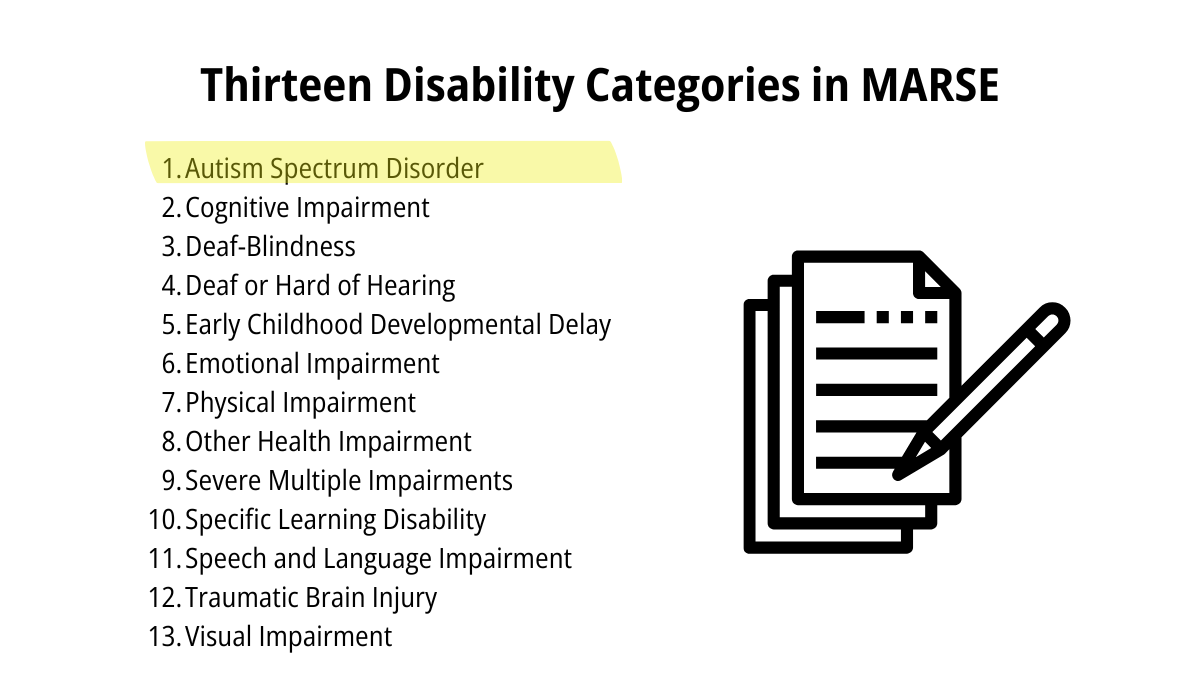Eligibility for Special Education under designation of Autism Spectrum Disorder
The Michigan Administrative Rules for Special Education (MARSE) define eligibility for special education services within thirteen categories of disability.
- MARSE R.340.1715 Autism Spectrum Disorder


